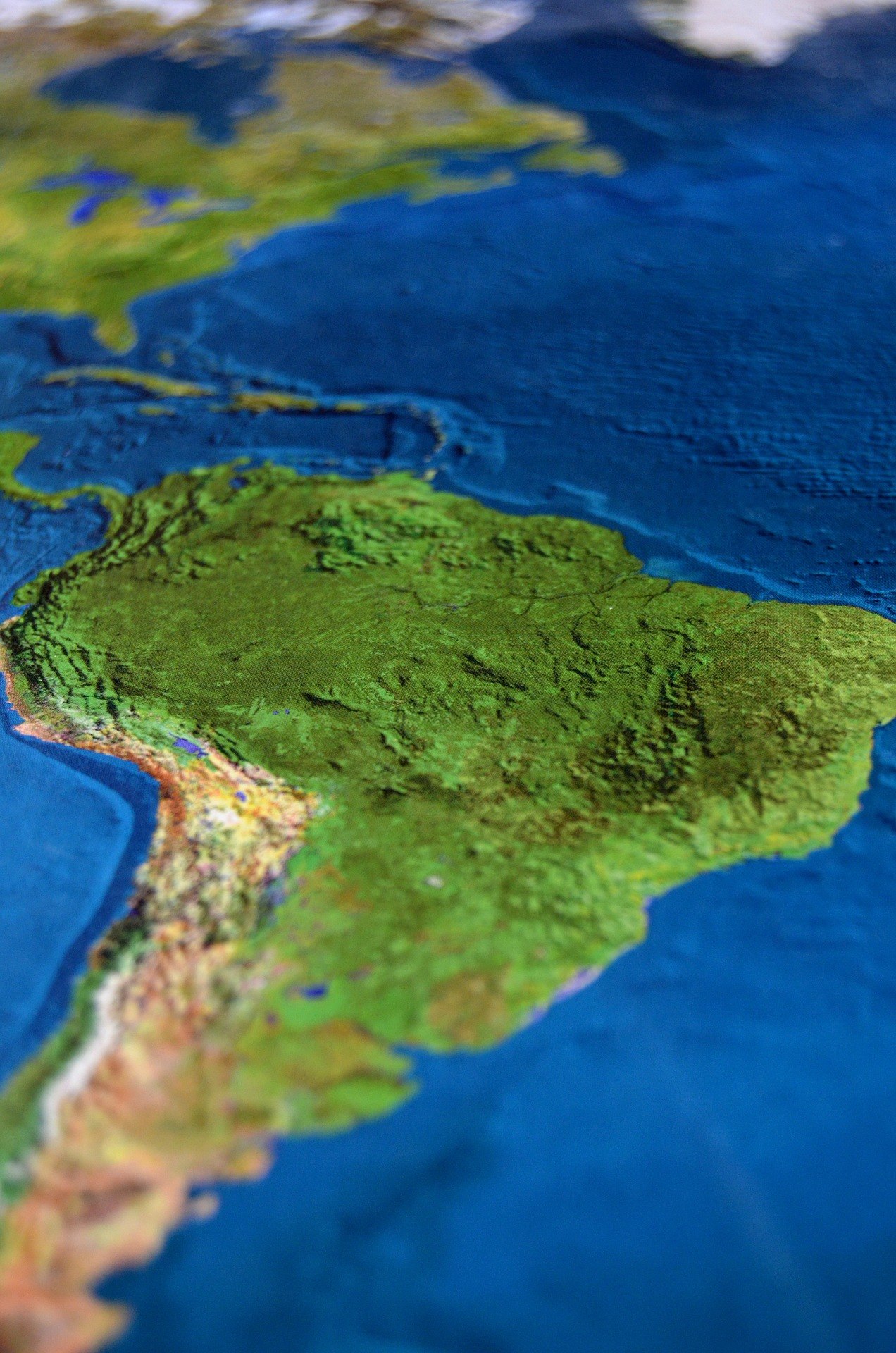
How many countries are in South America
There are 12 countries and two dependencies in South America. It has a population of over 433 million people. Brazil is South America's largest and most populous country, while the British-controlled Falkland Islands (Islas Malvinas) are the smallest and least populous.
Let's understand all the countries and dependencies in more detail.
Argentina: Argentina is in South America's southern half, bordering Chile to the west and the Atlantic Ocean to the east. The Andes in the north, the Pampas in the centre, and Patagonia in the south make up the country's four geographical areas. Argentina's population is about 45 million people, with the vast majority of them living in cities.
Bolivia: Bolivia is a landlocked country in South America's heartland. The country is divided into three primary geographical areas: the Alto Plano mountains, valleys, and tropical lowlands. More than half of the population is indigenous, with the remainder having mixed or European ancestry. Spanish is the most widely spoken language in the country, however, Quechua and Aymara are also spoken.
Brazil: Brazil is South America's largest country. It is home to the majority of the Amazon Rainforest and around 212 million people. Because Brazil was once a Portuguese colony, the official language is Portuguese. The Portuguese spoken in Brazil differs greatly from that spoken in Portugal. Sao Paolo is Brazil's largest city, with more than 10 million people living there.
Chile: Chile is in the southern part of South America, on the Pacific coast. The country's geographical layout is remarkable in that it is relatively long from north to south but quite narrow from east to west. Chile is regarded as the continent's most stable and rich country by some. Its population is estimated to be around 19 million people, the majority of whom live in cities.
Colombia: Colombia is a country in South America's northwest corner. The Andes Mountain range, the Lianos Plains, the Pacific Coastal Region, and the Caribbean Coastal Region are the six natural regions that make up the country. More than 80% of the population lives in cities, the largest of which is Bogota. After Mexico and the United States, Colombia has the world's third-largest Spanish-speaking population.
Ecuador: Ecuador is a country located on the northwest coast of South America. The equator runs completely across the country, which is divided into three distinct regions. The Galapagos Islands, which are located west of the mainland, helped Charles Darwin in developing his Theory of Evolution. Ecuador now has a population of approximately 18 million people, nearly two-thirds of whom reside in cities.
Guyana: It has two main ethnic groups - the Indo-Guyanese, who is of Indian heritage, and the Afro-Guyanese, of African descent. The country's capital, Georgetown, is home to nearly a third of the population.
Paraguay: Paraguay, like Bolivia, is a landlocked country. It has a population of about 7 million people, most of whom live in cities. The Guarani are Paraguay's most prevalent indigenous group, while the majority of the country's population is of mixed origin. The economy of Paraguay is still highly underdeveloped.
Peru: Peru is on the Pacific coast of South America, in the continent's northern half. The country is divided into three geographical regions: the Andes Mountains, the coast, and the Amazon Rainforest. Peru's population is around 33 million, with the majority living in cities. Spanish is the most widely spoken language in the country, but Quechua and Aymara are also extensively spoken.
Suriname: Suriname's coastal capital, Paramaribo, is home to more than 40% of the country's population. East Indians account for around a third of the population, while Creoles are of mixed European and African ancestry. Suriname has a population of roughly 590,000 people, the majority of whom live along its Atlantic coast.
Uruguay: Uruguay is a small country on the Atlantic coast of South America in the southeast. It is bordered on the north by Brazil and on the west by Argentina. The country's population is estimated to be around 3.5 million people. Montevideo, the country's capital, is home to almost a third of Uruguayans.
Venezuela: Venezuela is located on the Caribbean coast of northern South America. It has a population of approximately 28 million people, the majority of whom live in cities. The northeastern Maracaibo lowlands, northern mountains, central Orinoco plains, and southeasterly Guiana highlands make up the country's geographical areas.
Dependencies of South America
As mentioned above there are two dependencies in South America they are:
French Guiana: This France controlled territory is located at South America's northeastern Atlantic coast. The population of the region is estimated to be around 300,000 people, the majority of whom are Creoles. The territory is located on South America's northeastern Atlantic coast.
The Falkland Islands: The British-controlled Falkland Islands sit off Argentina's southern coast. Argentina claims ownership of the islands and invaded them in 1982, only to be pushed out by British soldiers. There are two main islands and several smaller ones that make up the islands. The British dependence has a population of 3,500 people, making it the least populated area in South America.
#southamerica #southamericancountries #populationofsouthamerica #langagesinsouthamerica #southamericandependencies #frenchguiana #falklandislands #argentina #brazil #spanish
- Comments (0)
- Recommended
- Milestones
Here are your recommended items...
Here are your milestones...




